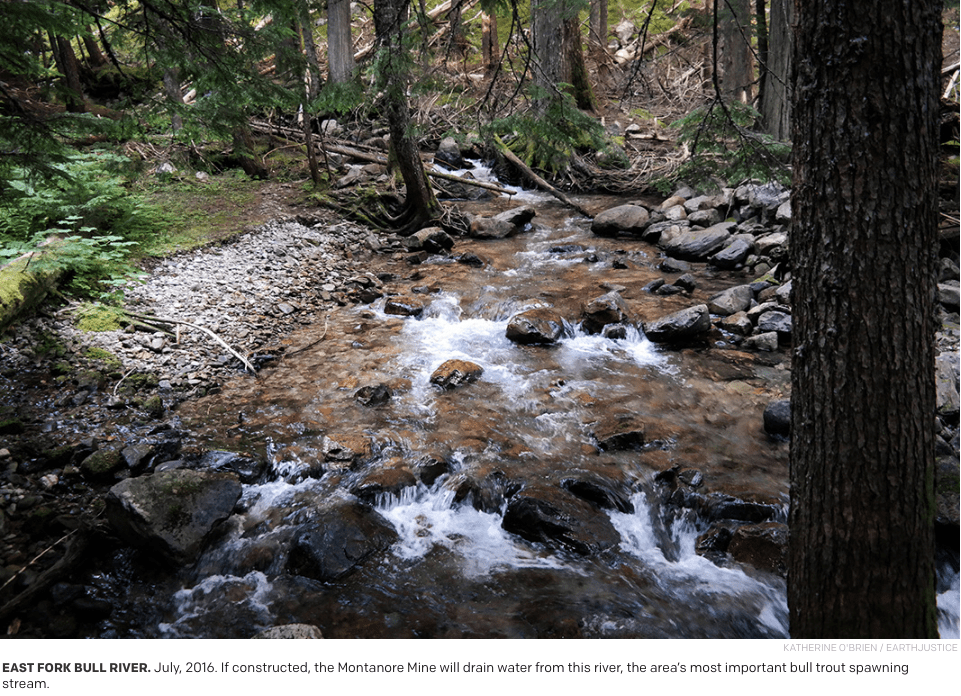Some people on this blog “don’t think AWR is an objective source of info.” Apparently, Dana L. Christensen, Chief Judge of the Federal District Court in Missoula, thinks otherwise, at least in this case.
Yesterday, Chief Judge Christensen ruled in favor of the Alliance for the Wild Rockies in its lawsuit challenging the federal government’s refusal to provide enhanced protections for imperiled Cabinet-Yaak grizzly bears in northwest Montana.
The Court agreed with the Alliance and vacated the newly-issued “not warranted” status, reinstated the 2013 “warranted but precluded” status, and remanded the issue back to the U.S. Fish and Wildlife Service.
Here’s some more background information from the Alliance for the Wild Rockies:
After being reduced to only two percent of their historic range, grizzly bears in the Lower 48 states were listed as “threatened” under the Endangered Species Act in 1975, sparking efforts to recover the species, which have had positive outcomes in some areas. However, in the Cabinet-Yaak ecosystem in northwest Montana, which is isolated from other grizzly bear populations, grizzlies continue to teeter on extinction primarily due to human-caused bear fatalities, habitat destruction, and motorized intrusion into core grizzly areas. There are fewer than 50 bears in this area; mortality rates are high; and the population chronically fails all recovery goals.
Since the early 1990’s, the U.S. Fish & Wildlife Service has admitted every year that this small grizzly population should be upgraded to ‘endangered’ status,” explained Mike Garrity, Executive Director of the Alliance for the Wild Rockies. “But for almost a quarter of a century the agency has used administrative loopholes to avoid making that formal designation, which would require the agency to delineate federally-protected ‘critical habitat’ that is essential to the recovery of these grizzlies
In 2014, conservationists filed suit to challenge the agency’s 20-year delay listing this population as an endangered species, and in response, the agency abruptly changed course to issue a determination that the upgrade to “endangered” status is no longer warranted for this imperiled population. “The agency’s cursory one-paragraph decision that the Cabinet-Yaak grizzly bear no longer qualifies as ‘endangered’ fails to cite a single scientific paper or other source of evidence to support its rationale,” Garrity said. “But in sharp contrast to its public statements, internal agency documents obtained through a Freedom of Information Act request by the Alliance found that the agency had no intention to issue a ‘not warranted’ decision and, in fact, found the isolated and small population and excessive human-caused mortalities warranted uplisting to ‘endangered’ status. Once we filed our first lawsuit, however, the agency issued the ‘not warranted’ determination as a strategy to render our first lawsuit as moot.”
After the first lawsuit was subsequently dismissed as moot due to the agency’s strategic and manipulative decision to issue a “not warranted” finding, Alliance filed a second lawsuit that argued that the “not warranted” finding itself was arbitrary and capricious. Yesterday, the federal court agreed, finding that it was arbitrary for the agency to apply a new policy redefining “endangered” at the eleventh hour. Because the agency’s decision relied on the new policy without sufficient explanation, its decision was arbitrary and unlawful and was vacated by the court.
“The facts present a stark picture,” Garrity explained. “Since 2007, the agency’s estimate for this population has dropped from 47 to 41 bears. For the bears native to the Cabinet Mountains, the population estimate has dropped from 15 to 5 bears – with the other bears being transplants. Added to that is the fact that the total mortality rate for the bears has tripled from 0.9 per year from 1982-1998 to 3.1 per year in the period 1999-2014.”
Garrity pointed to the agency’s monitoring report published in January 2015 which found: “The two periods (1983-1998 and 1999-2013) correspond to a decline in long term population trends beginning in 1999. Grizzly bear survival of all sex and age classes decreased from 1999-2013.” Garrity noted that “the population also consistently fails all agency targets for recovery. Grizzly bears fared no better in 2015, with at least six reported mortalities, including a mortality of a female, radio-collared bear in the Cabinet Mountains.”
“”It has been 24 years since the Fish and Wildlife Service first decided that this this small grizzly population should be upgraded to ‘endangered’ status, including over 20 years under a federal recovery plan. But the population of Cabinet-Yaak grizzly bears is simply not recovering,” Garrity said. “Instead, mortalities are increasing and we believe the population is actually dropping. That’s why we had no choice but to file our recent lawsuit seeking to force the uplisting of the Cabinet-Yaak grizzlies to ‘endangered’ status, which would ultimately allow the bears to obtain the “critical habitat” designation that “endangered” status requires.
“Since the court just struck down this latest excuse to not list them as ‘endangered’ the Fish and Wildlife Service should do its job, list the Cabinet Yaak grizzlies as ‘endangered,’ and designate critical habitat so that the population will finally recovery,” Garrity concluded. “Until the agency takes those vitally necessary actions the Alliance for the Wild Rockies will continue to fight in both the courts and the public arena to recover the Cabinet-Yaak grizzlies.”
Please find the court order attached.



